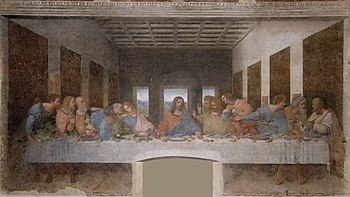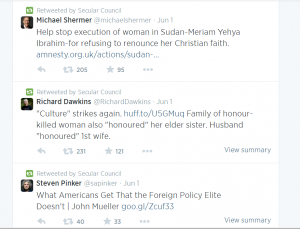Sometimes I ask myself : Are Africans returning to a dark age? Are we moving towards or away from enlightenment, from civilisation? These questions have become necessary if one is to put into context the magical and superstitious beliefs that are ravaging the continent.
Recent reports from Burkina Faso and Nigeria (not just about Boko Haram and the missing girls) have caused me to wonder as to where this African continent is heading in this 21st century. Africans, just like people in other regions of the world, entertain magical and mystical beliefs. They also hold spiritual and supernatural opinions. But the superstitious currents in Africa appear to be taking on a different dimension. I mean the situation is getting out of hand. African superstitions are so charged and threatening to the point that some may think that the people of this region are essentially a different sort of human being. But, of course, they are not.
I mean, India, Japan, China have their own superstitions. But they have a way of managing them so as to not allow these notions to hamper their scientific, technological and human development. The number thirteen is associated with occult nonsense in the US. But that has not prevented Americans from making breakthrough discoveries in science and technology. It has not stopped Americans from excelling in mathematics. Has it?
But in Africa, the situation is different. Superstition is so visible and widespread. Superstition is the greatest obstacle to development and progress in the region. This is because Africans have allowed themselves to be held back by irrational beliefs and associated harmful practices.
Many Africans express their magical beliefs in ways that make them a laughing stock internationally or reinforce the prejudice that Africans are primitive and credulous. Otherwise how does one make sense of a recent report from Nigeria that a woman turned into a bird?
In fact a local newspaper, the Punch, captioned the story this way: ”Police rescue ‘bird woman’ from Lagos mob”. ‘Bird Woman’? Well the story went like this. An elderly woman was accused of being a witch. She allegedly turned herself into a bird as a result of her witchcraft but something went wrong during her flight from a neighbouring city.
According to the report, ”she came from Ibadan for a meeting in Lagos but as they were returning home they missed their way and wasted so much time hovering in the area till daybreak. The woman claimed she fell because she was tired of flying”. And that transformed her back into a human being.
Is that not absurd? How on earth can a human being turn into a bird? But some people in Lagos are not asking such questions. For them it was not a fairytale. It was an act of an evil witch. An angry mob gathered and wanted to lynch the woman. But some police officers intervened and took the woman, or should I say the accused ‘bird woman’, away.
Many people in Nigeria and across Africa believe human beings can turn into animals. This claim is associated with witchcraft and magic. Many Nigerians believe witches can turn themselves into animals to carry out their occult operations. Birds are commonly believed to be witch’s familiars. Meanwhile no evidence is ever produced for these beliefs. Stories of people changing into goats, cats, or insects abound in Nigeria. But they are all based on hearsay, insinuations and received narratives, which Nigerians refuse to question, critically evaluate, or abandon. Not too long ago, the police in Ilorin in Central Nigeria arrested ‘a goat’. The goat was brought to the police station by members of a vigilante group. They claimed that the goat was a thief who was being chased but who then suddenly turned into a goat to avoid being arrested. Just imagine that!
When the police chief in the area was contacted, he said he could not confirm the accuracy of the story but stated that the ‘goat’ was now in custody. Tell me where else on earth could this happen today? Where in the contemporary world could the police arrest and keep a goat in custody? Did the police interrogate the ‘goat’? Did it eventually face charges? Was it brought to court?
You may have heard that some hunters in Bornu state have gone in search of the missing girls? They have joined the rescue efforts, not with satellite or drone technology but with magic charms ”amulets of herbs and other substances wrapped in leather pouches as well as cowrie shells, animal teeth and leather bracelets”. They claim these charms will protect them from the bullets of Boko Haram militants. Will they? If the anti-bullet charms are effective, why should Nigeria waste money buying bullet proof vests, vans and armoured cars for the police and the army? Why should Nigeria expend resources securing foreign military assistance? In fact why do we need up to 500 hunters with anti -bullet charms in the first place? Two or three of them should be enough to take on and defeat Boko Haram militants and rescue the girls.
Well, these superstitious absurdities are not only to be found in Nigeria.
In Burkina Faso a man was accused of using magic to steal the genitals of another man. The two men has some misunderstanding at a local resturant and this led to a fight. One of them claimed in the cause of the fight that the genitals had been stolen.
The accused man called the police for protection but before they arrived at the scene, a local mob had lynched him. Complaints of genital disappearance are common in other parts of Africa- in Nigeria, Ghana, Congo DRC etc. When men claim that their genitals have been stolen, it does not mean that the organ has disappeared. The organ is still there but the claim is that their sexual power has gone; that it has been magically removed. This complaint often leads to the accused receiving a beating or even being lynched. The belief is not only that some people can magically ‘steal’ the sexual potency of others or as is often claimed cause their penis to disappear, the ‘thieves’ are also accused of using the ‘genitals’ for ritual sacrifice which can make them rich or prosperous.
But there has never been any confirmed case of genital theft or penis disappearance. Claims of genitals stealing are often later discovered to be a hoax. But the belief remains very strong and often leads to murder or maltreatment of accused persons.
Now think about it. Where is Africa heading to with all these superstition-based abuses, absurdities and atrocities? Can Africans realize a civilized and enlightened society in this 21st century with this cognitive baggage, these pervasive dark age irrationalisms? But I must add that there is some light at the end of this dark tunnel of superstition. Many skeptics and freethought groups and activists are emerging in the region. Today, we have active groups in Uganda, Ghana, Nigeria, South Africa, Malawi, Kenya etc that are campaigning against superstitious and irrational beliefs.
But will the emerging trend of skeptical activism overwhelm the rage of dogma, superstition or magic? Only time will tell.
Leo Igwe
Leo is on a speaking tour in the US next month: details here.
(This is a syndicated post. Read the original at FreeThoughtBlogs.)










